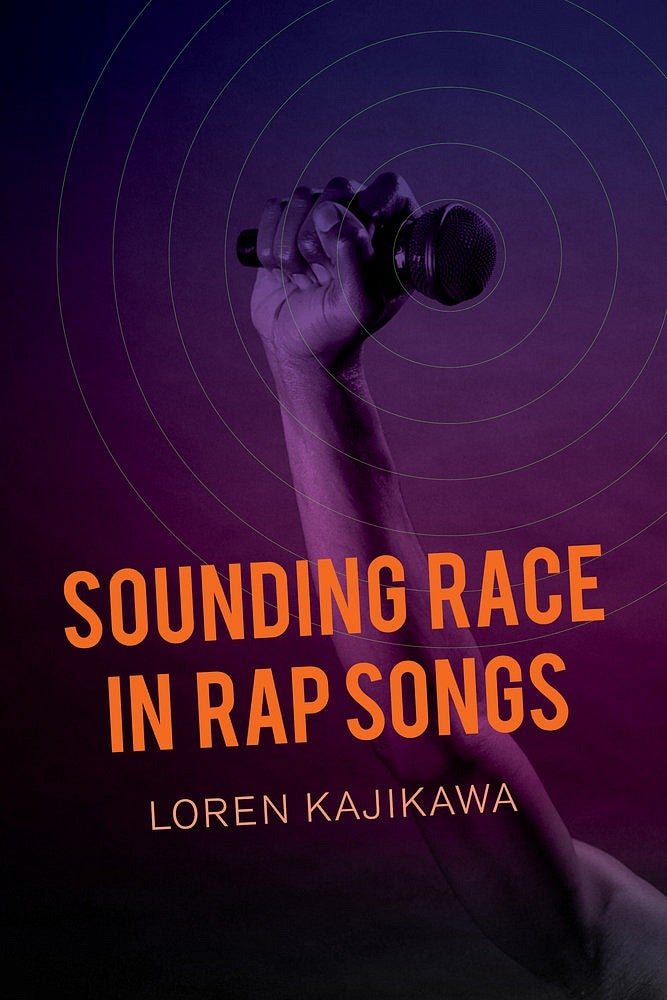April 24, 2015—Loren Kajikawa, assistant professor of musicology and ethnomusicology, tells us about his new book, and why assumptions about race are just as contingent as classifications of musical genre.
What basic questions does your research seek to answer?
If you look at the cover image of my book, Sounding Race in Rap Songs, you’ll see it features a dark-skinned arm raised upwards, hand wrapped tightly around a microphone. If the designers at University of California Press have been successful, you immediately grasp the racially charged imagery. The Black Power salute plus rap music equals “rap songs convey racial meanings.”
My research explores the role of sound in racial representation. We tend to think of race as primarily visual, something we see in a person’s skin color or facial features. But even people who are blind from birth learn to “see” race; we recognize—or think we recognize—the racial identity of unknown persons on the telephone; and we continue to understand and interpret U.S. popular music through racially coded genre labels, including R&B, Country, and of course Rap.
Like these genre labels, race is a fiction. The primary argument of my recent work is that if we pay attention to rap’s stylistic evolution, we can hear how ideas about race change over time.
What can you tell us about your book?
Each chapter takes its title from an iconic song. For example, the first chapter, “Rapper’s Delight,” plays on the Sugarhill Gang’s 1979 smash hit, which gave birth to rap as a commercial genre.
In 2013 I discussed some of my initial work on rap’s early years in a presentation at the Rock and Roll Hall of Fame.
Other chapters explore singles by Grandmaster Flash, Run-D.M.C., Public Enemy, N.W.A., Dr. Dre, and Eminem. But rather than spend an entire chapter discussing just one song, I approach the meaning of these popular and influential songs by placing them in their respective musical and historical contexts.

Most importantly, I demonstrate how these changes in imagery depend upon sound and changes in the ways that producers “make beats” (construct the backing tracks that MCs rap over).
How has the UO supported your research?
The Oregon Humanities Center funded a term away from teaching so I could write two chapters of the book. The School of Music and Dance funded trips to conferences such as the American Musicological Society (AMS) and International Association for the Study of Popular Music (IASPM), where I presented parts of the book and gained valuable feedback while I was still writing it.
My colleagues here at the UO have also been supportive. The Ethnic Studies department organized a works-in-progress talk on my behalf, and I received valuable feedback from colleagues both within the SOMD and across campus.
Lastly, many of the ideas in the book were developed and tested out in my undergraduate course on hip hop music (MUS 360).
